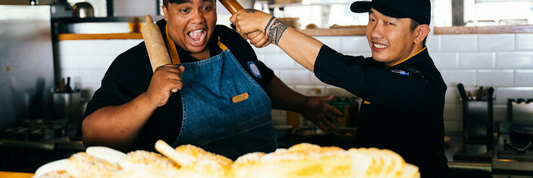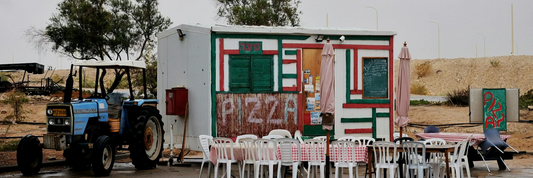The franchise model has become one of the most powerful and scalable business strategies in today’s competitive marketplace. From fast food chains to home services and retail, franchising allows entrepreneurs to grow under a recognized brand while offering franchisees a proven roadmap to success. But how does the franchise model actually work? What are its advantages, potential drawbacks, and which type of franchise might be right for your goals? This comprehensive guide breaks down the mechanics of the franchise model, its different formats, and how you can use it to expand your brand or start your entrepreneurial journey with lower risk and higher support.
-
Franchise vs Non-Franchise – Which Business Model is Right for You?
-
Quick Service Restaurants (QSRs): Everything You Need to Know
What Is the Franchise Model?

A franchise model is a business structure where the brand owner, known as the franchisor, grants rights to a franchisee to operate under its name. This relationship allows the franchisee to utilize the franchisor's established systems, processes, and support framework. Essentially, the franchise model offers a pathway for individuals or businesses to run a business leveraging an existing, recognizable brand, which can significantly reduce the risk associated with starting a new venture.
Operational Structure
In this model, the franchisee operates an independent location but adheres to the established brand guidelines set forth by the franchisor. This includes everything from store design and marketing strategies to customer service practices. In return for using the brand name and support, franchisees typically pay an initial franchise fee along with ongoing royalties, which are a percentage of their sales. This arrangement creates a symbiotic relationship where both parties can thrive provided the franchisee follows the established norms.
Common Types of Franchise Models

Business Format Franchise
The business format franchise is the most comprehensive type. Franchisees receive a complete package that includes branding, marketing strategies, operational systems, and training. The franchisor often provides ongoing support to ensure consistency across all franchises. Well-known examples of this type include fast-food chains like McDonald's and Subway, where the entire business operation model is standardized.
Product Distribution Franchise
In a product distribution franchise, the franchisee primarily focuses on selling the franchisor's products. This format is common in industries like automotive and beverages. For example, a beverage company may provide its products to franchisees, who then operate retail outlets or stores to sell those products. The relationship is based more on the distribution of products than on offering an entire business operation.
Manufacturing Franchise
A manufacturing franchise allows the franchisee to produce and sell products utilizing the franchisor's recipe or formula. This model is prevalent in the food industry, where franchisees must adhere to specific manufacturing processes to maintain product consistency. For instance, a chocolate brand might have franchisees that create and sell its confections while following the brand's secret recipes.
Hybrid Franchise Model
The hybrid franchise model combines aspects of various formats, offering flexibility to franchisees. This type can allow franchisees to both manufacture products and provide services or sell products simultaneously. This flexibility can cater to different markets and customer preferences, making it a strategic option for entrepreneurs looking to enter the franchise world.
Advantages and Disadvantages of Franchising

Advantages
- Access to an Established Brand: Franchisees can capitalize on the recognition and reputation of an existing brand, which can attract customers from day one.
- Ongoing Support and Training: Franchisors often provide continuous support, training programs, and resources to help franchisees succeed, which can be particularly beneficial for those new to the industry.
- Lower Failure Rate Than Independent Startups: Franchised businesses typically have a lower failure rate compared to independent startups, as they operate under tested systems and established brand names.
- Bulk Purchasing and Supplier Networks: Franchisees often benefit from economies of scale, as they can purchase supplies in bulk, reducing costs thanks to their affiliation with a larger brand.
Disadvantages
- High Initial Investment and Ongoing Fees: Starting a franchise can require significant upfront capital to cover franchise fees, equipment, and initial inventory. Ongoing royalties can also cut into profits.
- Limited Control Over Operations: Franchisees must operate within strict guidelines, which can limit their ability to innovate or make independent business decisions. This lack of autonomy may be frustrating for some entrepreneurs.
- Reputational Risks Tied to the Franchisor: Any negative publicity or operational issues faced by the franchisor can impact all franchisees. A franchisee's success is often intertwined with the overall reputation of the brand.
How to Launch a Franchise as a Restaurant Owner

Evaluate Business Readiness
Before diving into franchising, it is crucial to assess if your restaurant concept is scalable and replicable. Ask yourself:
- Is your menu easily adaptable to various locations?
- Can your customer service model be standardized across different franchises?
- Are there systems in place for consistency in food preparation and service?
A concept that works well in one location may not necessarily succeed elsewhere. Test your business model in various environments to ensure its viability before offering it to potential franchisees.
Protect Intellectual Property
Securing your brand and its unique elements is critical before franchising. Trademark your brand to establish a legal claim to your name, logo, and any proprietary recipes or processes. This step safeguards your intellectual property and provides a competitive edge in the franchising market. Consulting with a legal expert can help you navigate the trademark process effectively.
Prepare Legal Documents
Drafting a Franchise Disclosure Document (FDD) and a franchise agreement is essential for compliance and transparency. The FDD must include detailed information about:
- The history of your business
- Initial franchise fees and ongoing costs
- The rights and obligations of both franchisor and franchisee
These documents not only protect you legally but also instill confidence in potential franchisees by presenting a clear understanding of their investment.
Build an Operational Manual
An operational manual serves as a comprehensive guide for franchisees. It should include:
- Step-by-step procedures for daily operations
- Training materials for staff
- Guidelines for marketing and customer service
Providing clear instructions ensures consistency across franchises and helps franchisees effectively manage their outlets. This can also reduce the need for extensive support in the early stages of operation.
Recruit Franchisees
Identifying and attracting the right franchisees is key to your franchise’s success. Define the ideal partner profiles based on:
- Experience in the restaurant industry
- Financial capability
- Passion for the brand
Utilize marketing strategies or broker networks to reach interested candidates. Consider hosting informative webinars or franchise expos to showcase your business model and attract potential franchisees.
Franchise Success Story – Fireaway Pizza
From School Dropout to 160 Stores
Mario Aleppo, the visionary behind Fireaway Pizza, illustrates the power of a successful franchise model. Starting as a school dropout with a single pizza shop, he focused on delivering a high-quality product and exceptional service. This commitment enabled him to replicate his success across multiple locations, expanding to 160 franchises.
His story emphasizes that with dedication and a strong operational model, franchising can transform a small business into a national brand.
Frequently Asked Questions About Franchise Models
How Much Does It Cost to Start a Franchise?
Startup costs for franchises can vary widely, ranging from a few thousand dollars to hundreds of thousands, depending on the brand and type of business. It’s essential for potential franchisees to conduct thorough research and understand all associated costs, including royalties, marketing fees, and equipment expenses.
How Do I Choose the Right Franchise Model?
Selecting the right franchise model requires careful consideration. Evaluate options based on:
- Investment level
- Industry trends and demand
- Your personal strengths, such as management skills and passion for the industry
- The level of support provided by the franchisor
Researching various franchises and talking to existing franchisees can provide valuable insights.
What Are the Risks of Franchising?
Franchising comes with its own set of risks. Franchisees should be aware that:
- They may face strict operational guidelines set by the franchisor.
- Ongoing royalty and marketing fees can impact profitability.
- The brand’s overall reputation can influence the success of individual outlets.
Understanding these challenges upfront can help prospective franchisees make informed decisions.









